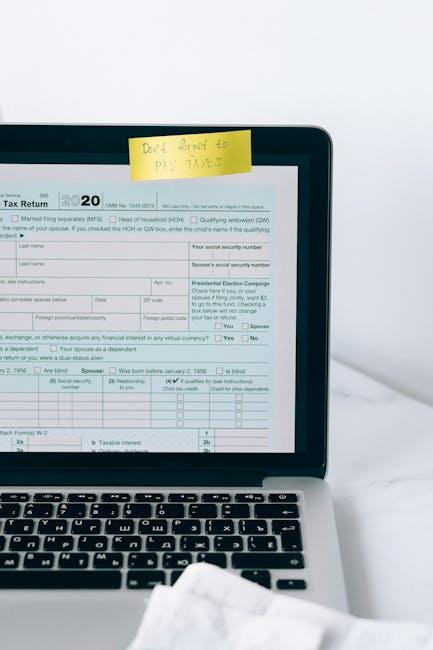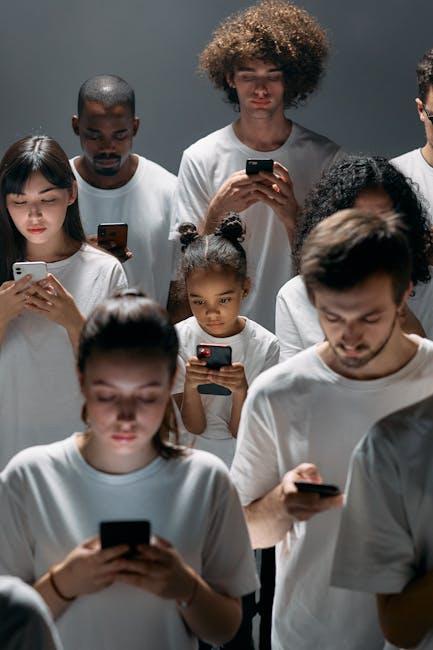In a world illuminated by glowing screens and buzzing notifications, our lives increasingly unfold through pixels and scrolls. From the morning scroll through social media to the evening binge of streaming shows, screen time has become an inseparable part of our daily rhythm. Yet, beyond the digital glow lies the tangible pulse of real time-the conversations, sights, and moments that resist being compressed into a timeline or capture. As we navigate this evolving landscape, the challenge emerges not in choosing one over the other, but in finding a harmonious balance where technology enhances rather than eclipses the richness of lived experience. This article explores the delicate dance between screen time and real time, seeking ways to harmonize our virtual and physical worlds.
Understanding the Impact of Screen Time on Mental and Physical Health

Extended screen time can subtly, yet significantly, influence both mental and physical health. Psychologically, prolonged exposure to screens often leads to increased stress levels, disrupted sleep patterns, and a reduction in face-to-face interactions, which are crucial for emotional well-being. The constant stream of notifications and blue light emission can heighten anxiety and decrease overall mood. Physically, sedentary screen habits promote poor posture, eye strain, and diminished cardiovascular fitness. This combination can set the stage for long-term health challenges that impact quality of life.
Balancing screen use requires more than just setting limits-it involves consciously integrating activities that nurture both mind and body. Consider the following strategies to foster healthier habits:
- Scheduled breaks: Every 30 minutes, stand up, stretch, or walk.
- Screen-free zones: Designate areas like the dining room for no-device interaction.
- Mindful tech use: Engage in intentional activities rather than mindless scrolling.
| Effect | Screen Time | Real-Time Activities |
|---|---|---|
| Social Connection | Digital chats, limited emotional cues | Face-to-face, richer empathy |
| Physical Movement | Sedentary, low activity | Active, varied motion |
| Sleep Quality | Blue light disrupts cycles | Promotes natural rhythms |
Exploring the Benefits of Real Time Social Interactions and Outdoor Activities

Immersing ourselves in real-time social interactions and outdoor activities offers a profound sense of connection and presence unmatched by digital screens. These moments foster genuine communication, where body language, tone, and facial expressions enrich relationships, building deeper trust and empathy. Beyond social benefits, stepping outside recharges the mind and body – exposure to natural light regulates circadian rhythms, while fresh air and physical movement boost endorphin levels, reducing stress and elevating mood. Engaging in face-to-face conversations or group activities sharpens cognitive skills, improves emotional intelligence, and cultivates mindfulness, creating a holistic sense of well-being.
To illustrate the stark contrast between screen time and real-time engagement, consider the table below highlighting key benefits:
| Aspect | Screen Time | Real-Time Outdoor Interaction |
|---|---|---|
| Social Connection | Superficial, often delayed | Rich, immediate, multi-sensory |
| Physical Health | Sedentary, eye strain | Active, promotes fitness |
| Mental Health | Can increase anxiety | Reduces stress, improves mood |
| Focus & Attention | Prone to distraction | Enhances presence and awareness |
- Improved communication skills through nuanced human interactions
- Boosted creativity and problem-solving when inspired by natural surroundings
- Enhanced physical well-being due to increased activity and sunlight exposure
- Stronger emotional resilience developed in genuine social environments
Practical Strategies for Balancing Digital Engagement with Everyday Life

Achieving a harmonious blend between digital and real-world interactions requires intentional actions that prioritize presence without completely disconnecting from technology. One effective approach is setting specific times during the day as tech-free zones. Whether it’s during family dinners or early mornings, these periods encourage meaningful face-to-face conversations and help reset your mental state. Implementing simple habits like leaving your phone in another room can also reduce the temptation to check screens impulsively, promoting a healthier rhythm of focus and relaxation.
Another powerful tactic is to consciously integrate outdoor activities or hobbies that do not rely on digital devices. Consider creating a weekly plan featuring walks, creative arts, or volunteering. Below is a quick guide to balance digital engagement with real-life activities based on daily screen time:
| Screen Time | Real-Time Activity | Suggested Duration |
|---|---|---|
| Under 2 hours | Outdoor walk or stretch | 15-30 minutes |
| 2-4 hours | Social or creative hobby | 30-60 minutes |
| Over 4 hours | Device-free evening with family/friends | 1-2 hours |
- Monitor and adjust your screen habits weekly to avoid burnout.
- Designate specific apps for focused work and leisure to minimize distractions.
- Set physical boundaries like charging devices outside the bedroom.
Creating Personalized Screen Time Limits That Foster Wellbeing and Productivity

When setting screen time boundaries, the key is to tailor limits that reflect your personal rhythms and priorities rather than relying on generic guidelines. This means observing when you naturally feel most focused and energized, then creating screen-free intervals to recharge during sluggish periods. Additionally, incorporating intentional breaks – such as stepping outside, stretching, or practicing mindfulness – complements these limits, transforming them into effective tools for enhancing both mental wellbeing and productivity.
To facilitate a balanced approach, consider the following steps:
- Track your current usage: Identify apps or activities that consume excessive time.
- Designate purpose-driven screen hours: Reserve specific times for work, leisure, and social interaction online.
- Set tech-free zones: Establish areas or times where screens are off-limits, like during meals or before bedtime.
- Regularly review and adjust: Reassess limits weekly to align with evolving goals and moods.
| Time Slot | Recommended Activity | Benefit |
|---|---|---|
| Morning (7-9 AM) | Focused work without distractions | Boosted concentration |
| Afternoon (12-1 PM) | Screen-free lunch break | Improved digestion and mindfulness |
| Evening (8-9 PM) | Unplug and unwind | Better sleep quality |
The Conclusion
As the glow of our screens continues to weave into the fabric of daily life, finding harmony between digital moments and tangible experiences becomes more essential than ever. By tuning into the rhythm of real time without entirely switching off from the digital world, we can craft a balanced existence where technology serves as a tool-not a trap. Ultimately, the art of balancing screen time and real time invites us to reconnect with the present, savor the world beyond pixels, and write our own story in both realms.














